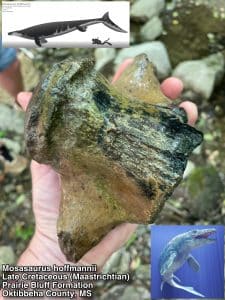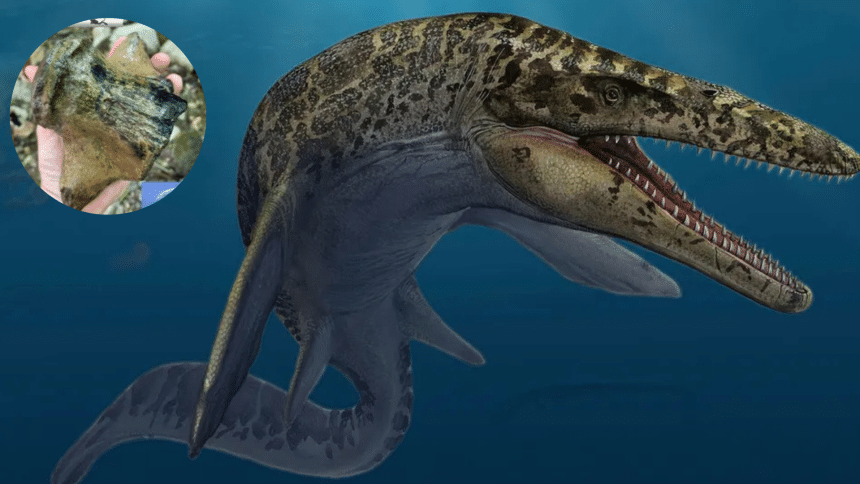From coast to coast and sea to sea, Mississippi continues to have some of the coolest fossil finds in the entire country.
The latest geological gem was found in Oktibbeha County on April 15 when a team of scientists with the Mississippi Department of Environmental Quality came across the vertebra of a mosasaur, commonly referred to as a “sea dragon” or “sea lizard,” protruding from a streambed. The newly discovered fossil could be evidence of one of the largest sea dragons to roam when most of what is now Mississippi was underwater 66 million years ago.

“While visiting an outcrop of the late Cretaceous Prairie Bluff Formation beneath a bridge on the Bluff Lake quadrangle, our survey scientists came across a very large fossil vertebra of a giant sea lizard called a mosasaur,” a release from MDEQ reads.

“The mosasaur vertebra our state survey scientists found was truly a giant! It belonged to a species known as Mosasaurus hoffmanni. M. hoffmannii was one of the largest and last of the mosasaurs living during the terminal Cretaceous at the time known as the Maastrichtian stage.”
The epitome of an apex predator, the species of sea dragon could grow up to 50 feet in length and weigh up to 20,000 pounds. The subaquatic carnivores sported jaws full of 60 dagger-like teeth that were curved inward with additional rows of teeth at the roof of their mouth to help secure larger prey.
Sea dragons lived alongside dinosaurs, such as the Tyrannosaurus Rex and the Velociraptor, but according to MDEQ, none were as large or as formidable as mosasaurs.
“Mosasaurs were sea dragons, both large and small, and were truly the apex predators dominating various environments of the seas of this time,” the release continued. “While the dinosaurs ruled the land, these Mesozoic era oceans were likely the most dangerous of any time in the entire history of our planet.”
The vertebra found by MDEQ scientists marks the largest mosasaur ever recorded in Mississippi, believed to be from a sea dragon that was at least 30 feet in length, and was deposited into the state’s paleontology collections at the Mississippi Museum of Natural Science in Jackson.







